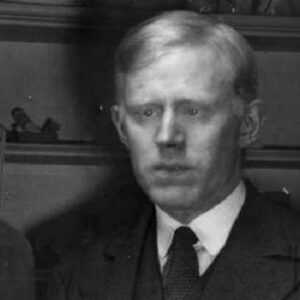Odd Hassel was a Norwegian chemist who shared the 1969 Nobel Prize in Chemistry with British chemist Derek H. R. Barton for his work on the fundamentals of ‘Conformational Analysis,’ the study of molecules’ three-dimensional geometric structure. Both of them had worked on the subject independently of one another but had reached a similar conclusion. Hassel’s work is predicated on the fact that carbon is a ubiquitous component of all living organisms in nature, which are composed of an infinite number of chemical compounds. The structures of these carbon compounds are determined by the way they are linked together via non-rigid energy bonds. As a result, molecules can adopt a variety of conformations, which affect their interactions with other substances. Hassel is the sole Norwegian to have been awarded the Nobel Prize for work carried out entirely in Norway. The other scientists born in Norway, such as Lars Onsager, who won the chemistry prize, and Ivar Giaever, who won the physics prize, were American citizens who won the prize for their work in the United States. Hassel spent the majority of his life in Norway, where he lived and worked.
Childhood & Adolescence
Odd Hassel was born on May 17, 1897, in Kristiania, Norway, which is now Oslo. His father, Ernst August Hassel, was a gynecologist, and his mother, Mathilde Christine Klaveness, was a nurse.
He was twinned with Lars, had two additional brothers named Ernst and Fredrik, and a sister named Ella. He lost his father when he was only eight years old. He remained with his mother until he was thirty-five years old.
He and his twin brother graduated from the ‘Vestheim School’ in 1915. In 1915, he enrolled at the ‘University of Oslo’ to study mathematics and physics with a focus on chemistry.
In 1920, he earned a B.Sc. in chemistry from the ‘University of Oslo.’ He spent a year in France and Italy after earning his bachelor’s degree studying theoretical physics but decided to continue with chemistry.
In the autumn of 1922, he traveled to Germany and spent approximately six months in the laboratory of Professor K. Fajans in Munich, where he studied the reactions of organic dyes with silver halides, which resulted in the discovery of ‘absorption indicators.’
He moved to Berlin after six months and joined the ‘Kaiser Wilhelm Institute’ in Dahlem, where he worked on crystallography using X-rays.
On Fritz Haber’s recommendation, he was awarded a ‘Rockfeller Foundation Fellowship’ for the period 1923-1924, which enabled him to complete his doctorate.
In 1924, he earned a PhD in chemistry from the ‘Humboldt University of Berlin.’
Odd Hassel began his career in 1925 as a ‘universitetsstipendiat’ at the ‘University of Oslo’ and was promoted to ‘dosent’ in 1926. In 1934, he was appointed Professor and Chairman of the Physical Chemistry department at the university, a position he held until 1964.
From 1930, he conducted extensive research on the structure of ‘cyclohexane’ and its derivatives and discovered that a molecule of ‘cyclohexane’ crystallized in two different shapes: boat-shaped and chair-shaped. He demonstrated that it contained six-membered rings and that the carbon atom’s two bonds were oriented differently in space.
He established the fundamental principles of ‘Conformational Analysis’ at this time and also published a book titled ‘Kristallchemie’ on his discovery.
By 1943, he had introduced two new methods not previously used in Norway to supplement the experimental methods that were already available.
He had gathered sufficient data but was still required to draw final conclusions about possible’ conformations’ and published an article on his findings in the Norwegian journal ‘Journal of Chemistry: rock being and metallurgy’.
His publication in the Norwegian journal almost certainly provoked the authorities, and he was arrested and handed over to the German forces occupying Norway by the ‘Nasjonal Samling,’ a group of Norwegian Nazis. He was interned at the ‘Grini’ concentration camp until November 1944, when he was liberated.
When he returned to the institute, he discovered it was nearly deserted and decided to undertake experimental work on electron diffraction.
He published the majority of his articles in English and Norwegian following the war in a Scandinavian journal, which he edited from 1947 to 1956.
Throughout the late 1950s, his research focused primarily on the structure of organic halogen compounds. He conducted a series of experiments to ascertain the structure of the compounds due to the paucity of available information.
He was able to establish a fundamental set of rules governing the geometry of the compounds, which remained his primary focus for the next decade. In 1981, he was named ‘Professor Emeritus’.
Significant Works of Odd
Odd Hassel wrote the 1934 book ‘Krtistallchemie’ or ‘Crystal Chemistry’ in German.
Awards and Accomplishments
Odd Hassel was the 1946 recipient of the ‘Fridtjof Nansen Award.’ In 1964, he was awarded the ‘Guldber and Waage Memorial Medal’ by the ‘Norwegian Chemical Society’ and the ‘Gunnerus Medal’ by the ‘Royal Norwegian Academy of Sciences.
In 1969, he was awarded the Nobel Prize in Chemistry. Additionally, he was made a ‘Knight of the Order of St. Olay’ and a Fellow of several societies, including the ‘Chemical Society of London’, the ‘Norwegian Academy of Science’, the ‘Norwegian Chemical Society’, the ‘Royal Danish Academy of Sciences’, the ‘Royal Norwegian Academy of Sciences’, and the ‘Royal Swedish Academy of Sciences’.
The ‘University of Copenhagen’ and the ‘University of Stockholm’ both bestowed honorary degrees on him. Since his 70th birthday in 1967, distinguished scientists from around the world have gathered at the ‘University of Oslo’ to deliver lectures dubbed ‘The Hassel Lectures’. The Norwegian Posts & Telegraphs department commemorated him with a postage stamp.
Personal History and Legacies
Throughout his life, he remained unmarried. Since birth, he had suffered from albinism. Odd Hassel died on May 11, 1981, in Oslo, Norway.
Estimated Net Worth
The net worth of Odd is unknown.
Trivia
Odd Hassel was a survivor of Germany’s ‘Grini’ concentration camp, where he was imprisoned from 1943 to 1944.


